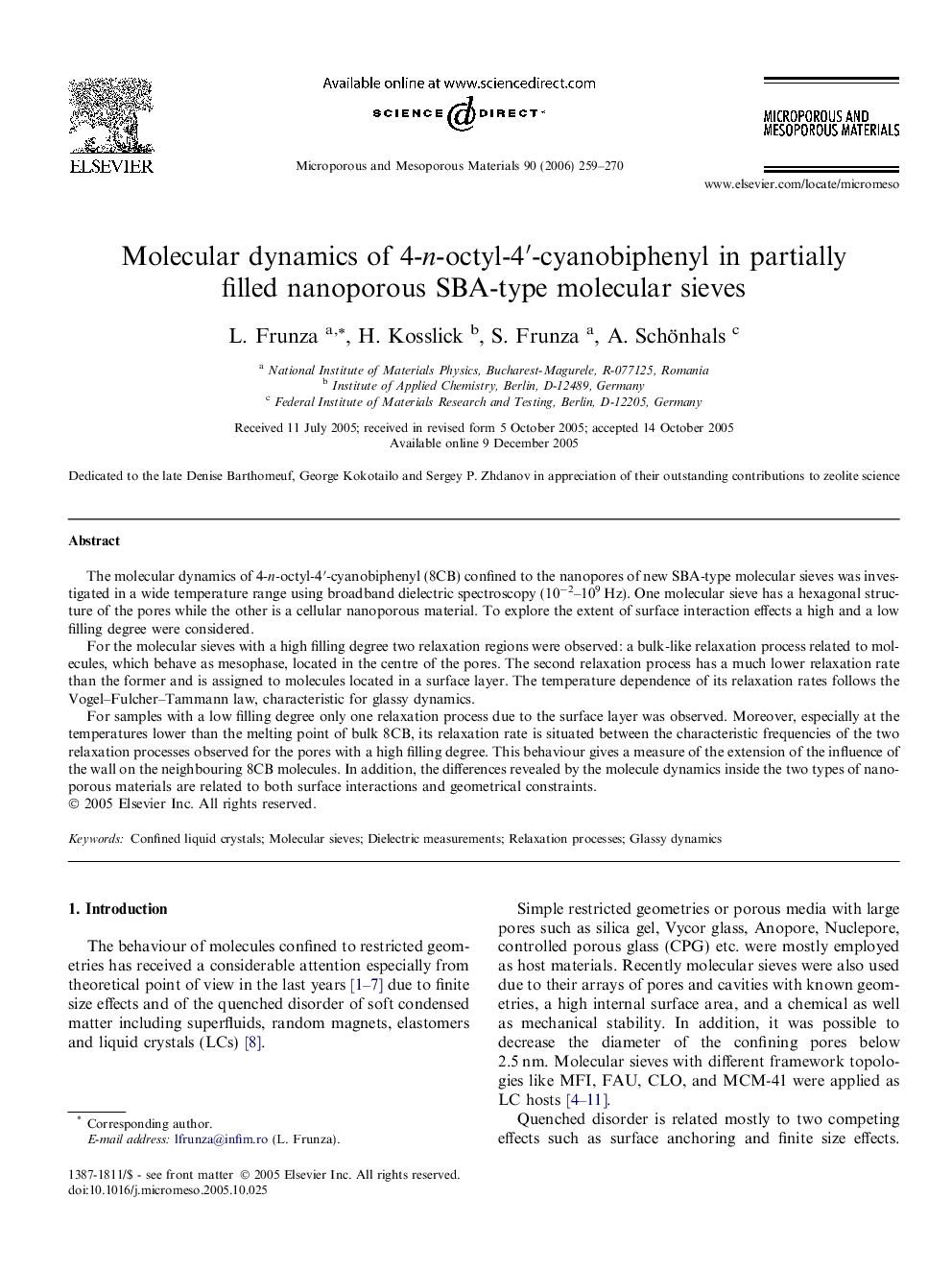| Article ID | Journal | Published Year | Pages | File Type |
|---|---|---|---|---|
| 77400 | Microporous and Mesoporous Materials | 2006 | 12 Pages |
The molecular dynamics of 4-n-octyl-4′-cyanobiphenyl (8CB) confined to the nanopores of new SBA-type molecular sieves was investigated in a wide temperature range using broadband dielectric spectroscopy (10−2–109 Hz). One molecular sieve has a hexagonal structure of the pores while the other is a cellular nanoporous material. To explore the extent of surface interaction effects a high and a low filling degree were considered.For the molecular sieves with a high filling degree two relaxation regions were observed: a bulk-like relaxation process related to molecules, which behave as mesophase, located in the centre of the pores. The second relaxation process has a much lower relaxation rate than the former and is assigned to molecules located in a surface layer. The temperature dependence of its relaxation rates follows the Vogel–Fulcher–Tammann law, characteristic for glassy dynamics.For samples with a low filling degree only one relaxation process due to the surface layer was observed. Moreover, especially at the temperatures lower than the melting point of bulk 8CB, its relaxation rate is situated between the characteristic frequencies of the two relaxation processes observed for the pores with a high filling degree. This behaviour gives a measure of the extension of the influence of the wall on the neighbouring 8CB molecules. In addition, the differences revealed by the molecule dynamics inside the two types of nanoporous materials are related to both surface interactions and geometrical constraints.
